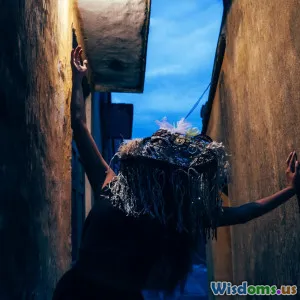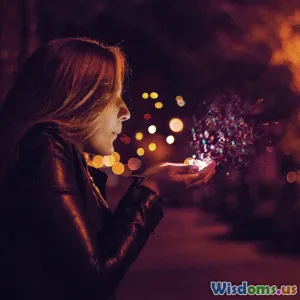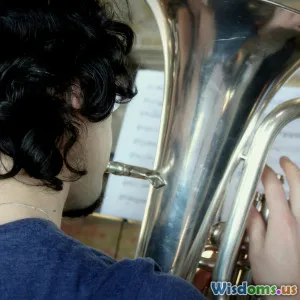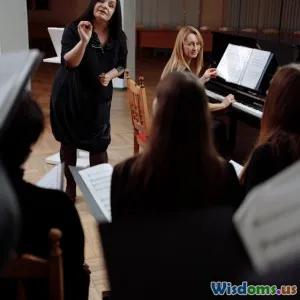
How Live Art Installations Transform Urban Spaces
9 min read Explore how live art installations revitalize and redefine urban spaces, fostering community, culture, and creative urban experiences. (0 Reviews)
How Live Art Installations Transform Urban Spaces
Imagine walking through a dull city square that suddenly blooms into a sensory feast: a towering kinetic sculpture whirls overhead, performers animate the space with captivating acts, and neighborhood residents gather, mesmerized and energized. This encapsulates the transformative power of live art installations in urban environments. Far beyond static monuments, live art installations breathe dynamic life into public spaces, redefining how communities interact with their cities.
In this article, we explore the multifaceted ways live art installations are revolutionizing urban spaces: from social, economic, and cultural benefits to urban design and community empowerment. Drawing on examples, data, and expert insights, we uncover why cities around the globe increasingly embrace these interactive artworks.
Defining Live Art Installations in Urban Contexts
Unlike traditional public art, which often consists of enduring sculptures or murals, live art installations incorporate performance, interactivity, and temporal elements. They often use multimedia components — light, sound, movement — and invite direct participation from the public to create immersive experiences.
Notable features include:
- Temporal and dynamic nature: They are often temporary or evolve over time, responding to audience interaction or environmental cues.
- Community participation: Audiences are not just observers but co-creators or performers.
- Integration with urban settings: They leverage existing architecture or open public spaces to maximize impact.
These characteristics allow live art installations to uniquely activate urban spaces and spark new forms of social engagement.
Catalyzing Social Connectivity and Inclusion
Activating Public Life
Cities worldwide strive to foster social cohesion, and live art installations are powerful tools for this. By transforming mundane or overlooked spaces, live art creates hubs where people of diverse backgrounds converge.
A striking example is the "Light Wave" installation on Toronto’s waterfront, which used interactive LED displays controlled by visitors’ gestures. It not only beautified the area but became a lively gathering space where strangers shared moments of wonder. As Jane Jacobs, the visionary urbanist, emphasized, “Cities have the capability of providing something for everybody, only because, and only when, they are created by everybody.” Live installations invite this collective authorship.
Inclusive and Accessible Urban Art
Many live art projects deliberately incorporate accessibility to engage marginalized groups. For instance, "Sonic Playground," a live sound installation in London, invited participation from individuals with disabilities using tactile and auditory sensors. This inclusivity fosters empathy and expands civic participation across social divides.
This community-oriented approach to art helps reclaim ownership of public spaces from being solely commercial or transit zones to vibrant cultural commons.
Economic and Cultural Revitalization
Cities investing in live art installations often observe tangible economic and cultural benefits.
Driving Foot Traffic and Local Business
Interactive installations draw visitors beyond conventional venues. According to a 2019 study by the Urban Land Institute, public art with live engagement components increased foot traffic by up to 30% in activated urban zones, boosting revenue streams for nearby shops and cafés.
A case in point is the "Before I Die" chalk wall series by artist Candy Chang, which became a viral global phenomenon. Public spaces employing such installations saw significant spikes in visitor numbers and cultural tourism, proving that art can spur bottom-up economic growth.
Enhancing Urban Identity and Tourism
Cities like Berlin, Melbourne, and New York continuously host live art festivals — such as the annual Berlin Art Week or Melbourne’s White Night — which feature live installations transforming neighborhoods after dark. These events cultivate a city’s brand identity as a hub of creativity and innovation, attracting international tourists and investors.
Live installations serve as cultural signifiers reflecting a city’s diversity, history, or aspirations, reinforcing community pride and external perception.
Urban Design Integration and Sustainability
Reimagining Public Spaces
Urban planners are increasingly collaborating with artists to embed live installations into long-term urban design strategies. For example, Chicago’s "Crown Fountain" in Millennium Park employs video art displayed on towering glass blocks that interactively respond to visitors, merging art, architecture, and technology.
Live art installations push the boundaries of traditional urban infrastructure by creating adaptable spaces that respond to seasonal changes, technological advances, or community feedback.
Promoting Environmental Awareness
Several installations focus on sustainability themes, using renewable energy sources or recyclable materials as part of their design. The "Bloom" installation in Stockholm, for instance, utilized solar energy to activate moving petals, inviting reflection on nature’s fragility in urban contexts.
These projects educate the public on ecological issues while beautifying and enlivening the city.
Measuring Impact: Data and Insights
Despite their ephemeral nature, many live art installations use digitized data collection to assess reach and engagement.
For example, New York’s "Pulse" light installation recorded over 200,000 interactions in one month, with participants reporting elevated mood and a sense of community. A survey found 72% of visitors were more likely to spend time in the transformed space even after the installation was removed.
Artists and planners increasingly incorporate evaluation frameworks to maximize social value, ensuring such works contribute meaningfully beyond spectacle.
Challenges and Considerations
While promising, live art installations present challenges:
- Funding and sustainability: Many projects rely on grants and temporary funding, complicating long-term planning.
- Maintenance and wear: Live elements facing weather and public use require attentive upkeep.
- Inclusive representation: Ensuring diverse communities have meaningful involvement in creation and curation is essential but sometimes overlooked.
Addressing these requires cross-sector collaboration among arts organizations, municipalities, and residents.
Inspiring Action and Future Trends
Urban dwellers and city leaders can support live art by advocating for public funding, attending installations, or even participating as collaborators. Emerging technologies like augmented reality (AR) promise to expand live art’s scope, allowing layers of digital performance superimposed on real spaces.
The exponential rise in community-led initiatives shows that live art is not a passing trend but a vital avenue through which cities evolve, democratizing creativity and human connection.
Conclusion
Live art installations have emerged as transformative agents in urban spaces, energizing public life, nurturing inclusive communities, and enlivening cityscapes culturally and economically. Their unique blend of art, interactivity, and urbanism redefines how people inhabit their cities — from passive consumers of public space to active co-creators.
By fostering social cohesion, driving economic vitality, and pushing innovative urban design, live art installations help cities become truly livable, imaginative, and resilient.
For urban planners, artists, and residents alike, embracing live art is an invitation to shape the future of our shared cities where creativity thrives on every street corner.
References
- Urban Land Institute. (2019). Impact of Public Art on Urban Foot Traffic.
- Jacobs, Jane. The Death and Life of Great American Cities. Vintage, 1961.
- Candy Chang, Before I Die project archives.
- Case studies from Millennium Park, Chicago and Stockholm Green Art Initiatives.
Rate the Post
User Reviews
Popular Posts


















